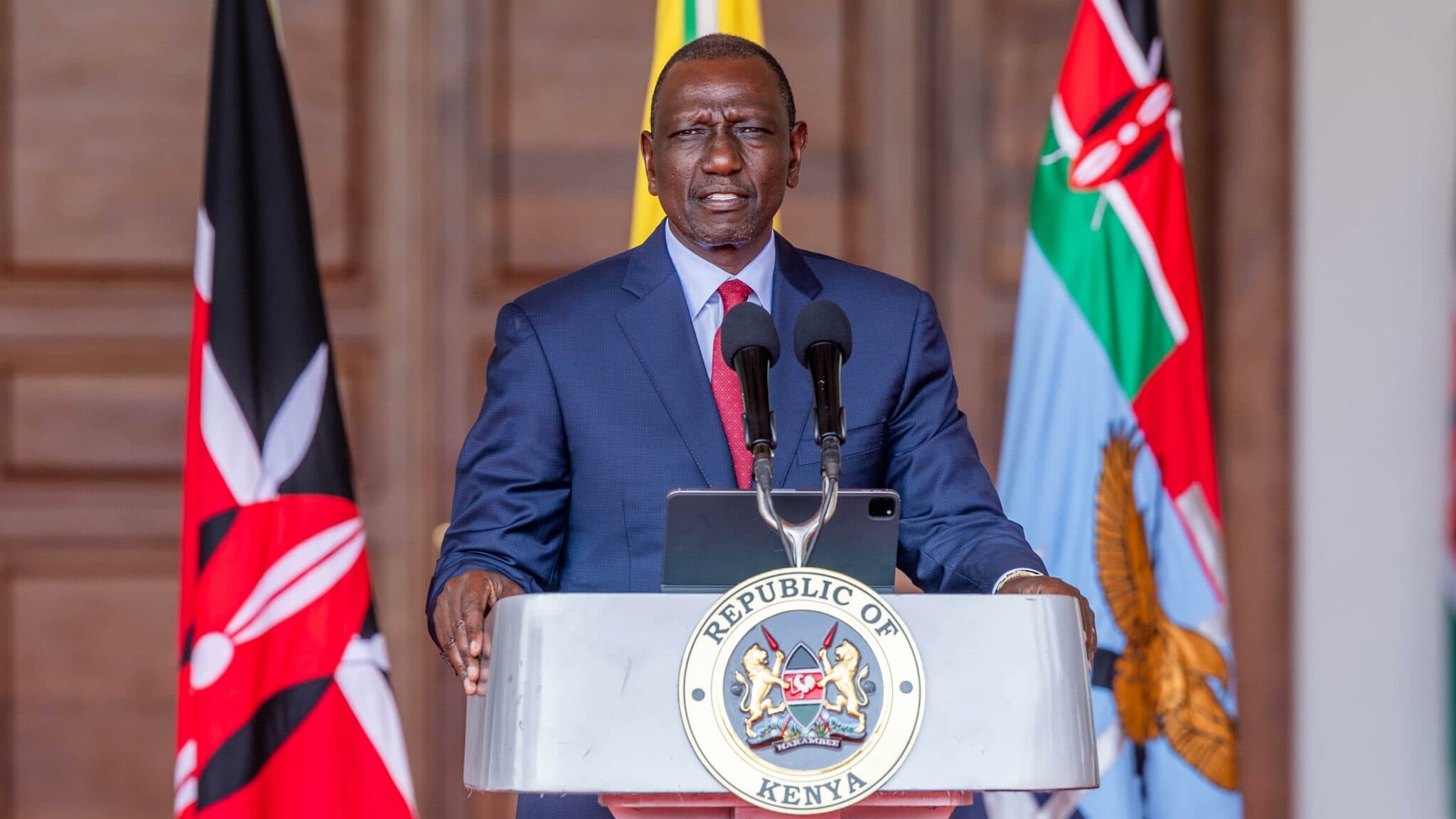Loading News Article...
We're loading the full news article for you. This includes the article content, images, author information, and related articles.
We're loading the full news article for you. This includes the article content, images, author information, and related articles.
President William Ruto has affirmed the Orange Democratic Movement's (ODM) crucial role in Kenya's political future, stating the party will either form or be part of the next government.

President William Ruto on Sunday, October 19, 2025, declared that the Orange Democratic Movement (ODM) will be a central component of Kenya's future governance, either by forming the next government or being part of it. Speaking at the burial service of former Prime Minister Raila Odinga in Bondo, Siaya County, President Ruto pledged his administration's support to strengthen ODM, emphasizing its importance for a robust democracy.
Ruto's remarks come amid a fluid political landscape following Odinga's passing, which has prompted discussions about ODM's future and potential succession. The President underscored that a strong ODM is vital for a stable and inclusive governance structure, asserting, “ODM must be strong as we go to 2027 because that is the only way we are going to have a strong government.”
The Orange Democratic Movement, founded in 2005, emerged from a grassroots movement that opposed the proposed constitution in a referendum, using the 'Orange' symbol for the 'No' vote. Since its inception, ODM has been a significant force in Kenyan politics, participating in general elections and forming part of the Grand Coalition Government in 2008, with Raila Odinga serving as Prime Minister.
The party has consistently championed constitutional reforms, social justice, and equitable development, playing a key role in the successful campaign for the 2010 Constitution. Over the years, ODM has formed various coalitions, including the Coalition for Reforms and Democracy (CORD) in 2013 and the National Super Alliance (NASA) in 2017, to contest elections and advocate for democratic reforms.
President Ruto's recent statements are seen as an effort to consolidate unity and cooperation between his administration and ODM, particularly following a broad-based government arrangement that included Odinga's allies. This aligns with a broader trend of political realignments in Kenya, where alliances often form in anticipation of upcoming elections.
Kenya operates as a multi-party democracy, a system reintroduced in 1992 after a period of de facto and de jure one-party rule. The Constitution of Kenya, 2010, establishes a unitary state with 47 counties, each having semi-autonomous governments that work in consultation with the national government.
The national government comprises three distinct branches: the Legislature (Parliament), the Executive, and the Judiciary, each independent with roles defined by the Constitution. The President, who is the head of the executive, is directly elected for a five-year term and must garner over 50% of the votes nationally and at least 25% in half of the 47 counties.
President Ruto's emphasis on strong political parties reflects the constitutional framework that underpins Kenya's democratic governance. Political parties are considered foundational to a meaningful democracy, promoting national unity and accountability.
During Odinga's burial, several ODM leaders, including Siaya Governor James Orengo, Homa Bay Governor Gladys Wanga, and Secretary-General Edwin Sifuna, reaffirmed their commitment to the party's unity and legacy. Governor Orengo appealed against the weakening of political parties, drawing parallels to Kenya's post-independence era when the country transitioned into one-party rule.
President Ruto described Odinga as a mentor and teacher, acknowledging his significant contributions to Kenya's democratic journey and his vision for a peaceful, democratic, and inclusive nation. Ruto stated his commitment to honouring Odinga's legacy by ensuring ODM remains strong and united towards the 2027 General Election.
The political landscape in Kenya is expected to remain dynamic in 2025, with potential headwinds to stability. The need for fiscal consolidation could lead to elevated protest activity, particularly around the 2025 Finance Bill. Governance risks are also expected to remain high due to ongoing political tensions.
The future direction of ODM and its reorganization following Odinga's death could significantly shape Kenya's political and economic trajectory ahead of the 2027 elections. President Ruto's overtures to ODM could lead to a significant political realignment, potentially altering the traditional dynamics of opposition politics in Kenya.
While President Ruto has pledged support for ODM, the specifics of how this will translate into a future government formation remain to be seen. There is speculation about the potential for a coalition between ODM and the ruling United Democratic Alliance (UDA) ahead of the 2027 General Election.
The internal dynamics within ODM, particularly regarding succession and leadership, are also areas of uncertainty. The party faces the challenge of upholding its democratic ideals while adapting to a changing political environment without its long-standing leader.
Observers will be keenly watching the internal leadership transitions within ODM and how the party positions itself in the lead-up to the 2027 General Election. The nature of any potential alliances or coalitions between ODM and other political formations, particularly the ruling Kenya Kwanza, will be a key development to monitor. The impact of these political realignments on national unity and governance stability will also be a critical area of focus.
The ongoing political discussions around ODM's future are intertwined with broader national conversations on democratic resilience, economic stability, and the role of political parties in shaping Kenya's trajectory, especially in the wake of recent youth-led protests against the cost of living and governance issues.
Keep the conversation in one place—threads here stay linked to the story and in the forums.
Other hot threads
E-sports and Gaming Community in Kenya
Active 6 months ago
Popular Recreational Activities Across Counties
Active 6 months ago
The Role of Technology in Modern Agriculture (AgriTech)
Active 6 months ago
Investing in Youth Sports Development Programs
Active 6 months ago